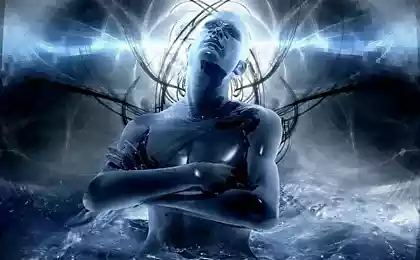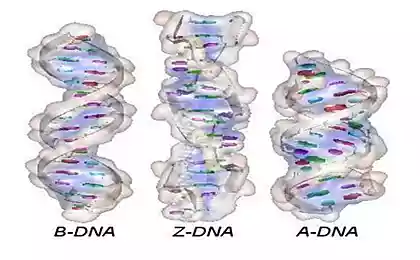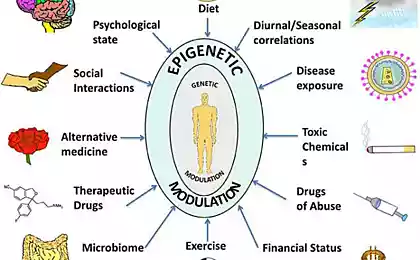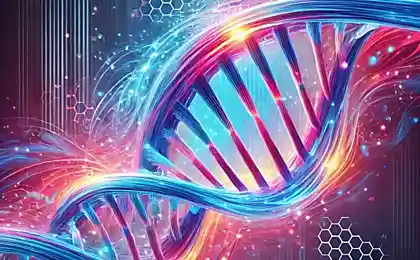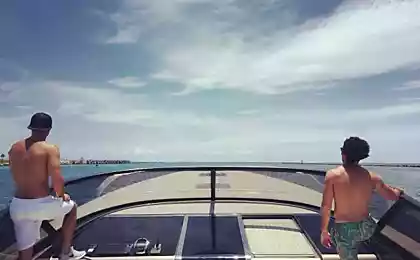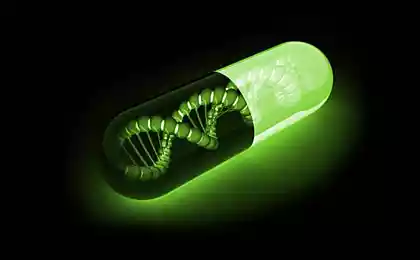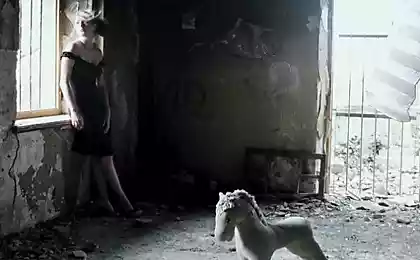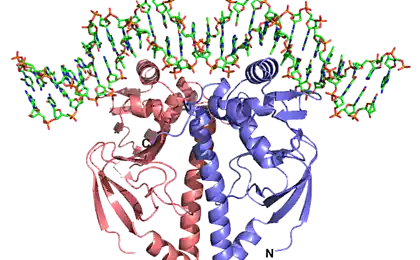243
Tetrahedron DNA Created in Laboratory
Due to its unique double helical structure of DNA, it is possible to construct and use the spatial form as the base material for programmable nanoscale architectures. Such a bulky complex of DNA can have many applications, including peculiar DNA nanomotors for the delivery of biosensors and drugs. This research is a big step forward, as it was possible to create a nanometer-sized tetrahedron from a single strand of DNA using a method that has significant advantages for assembling similar structures on a large scale.
Researchers from Arizona State University and the Hong Kong University of Science and Technology published their findings in the 2009 issue of the Journal of the American Chemical Society. As the researchers explain, the number of different artificial DNA structures is constantly growing. But until now, 3D DNA nanostructures have been created from only a few strands (oligonucleotides) with a given sequence. In this new study, an international team of scientists has shown that DNA tetrahedrons can now be self-assembled from just one strand of DNA. In addition, they demonstrated a method for reproducing the DNA of tetrahedrons in a living organism that could be applied to the development and dissemination of other DNA nanostructures in the future.
In an interview with PhysOrg.com, one of the scientists, Yang Mi, said: The resulting 3D nanostructures that can be reproduced in vivo can tell us a lot about the powerful mechanisms of nature. DNA nanostructures can serve as scaffolds to create other materials with controlled spatial arrangement. The study and adjustment of the spatial dependence and interaction of biomolecular nanomaterials can be carried out in the way we have found.
The DNA of the tetrahedron of four triangular faces was constructed from a single strand of DNA, which was 286 nucleotides in length. The six ribs of the tetrahedron consist of double helixes: five were identical to the double helix, and the sixth rib was more complex – it consisted of a “double double helix”. Four of these ribs contain fissionable elements — nucleotide sequences in the center — and all four vertices are made of an odd thymine base to have enough flexibility to stack at these corners. The researchers then annealed the DNA. When annealed, DNA self-organized into a tetrahedron with a rib length of seven nanometers. After confirming the successful DNA assembly of the tetrahedron, the researchers developed a method for replication of nanostructures for use in vivo for the purpose of cloning and producing nanostructures on a large scale.
The use of just one strand of DNA, according to the authors, allows to significantly simplify the process of making tetrahedrons; in the near future, scientists intend to create polyhedrons of other types, as well as modify the technology and switch to the use of RNA.
Source: www.quantumcristal.com
Researchers from Arizona State University and the Hong Kong University of Science and Technology published their findings in the 2009 issue of the Journal of the American Chemical Society. As the researchers explain, the number of different artificial DNA structures is constantly growing. But until now, 3D DNA nanostructures have been created from only a few strands (oligonucleotides) with a given sequence. In this new study, an international team of scientists has shown that DNA tetrahedrons can now be self-assembled from just one strand of DNA. In addition, they demonstrated a method for reproducing the DNA of tetrahedrons in a living organism that could be applied to the development and dissemination of other DNA nanostructures in the future.
In an interview with PhysOrg.com, one of the scientists, Yang Mi, said: The resulting 3D nanostructures that can be reproduced in vivo can tell us a lot about the powerful mechanisms of nature. DNA nanostructures can serve as scaffolds to create other materials with controlled spatial arrangement. The study and adjustment of the spatial dependence and interaction of biomolecular nanomaterials can be carried out in the way we have found.
The DNA of the tetrahedron of four triangular faces was constructed from a single strand of DNA, which was 286 nucleotides in length. The six ribs of the tetrahedron consist of double helixes: five were identical to the double helix, and the sixth rib was more complex – it consisted of a “double double helix”. Four of these ribs contain fissionable elements — nucleotide sequences in the center — and all four vertices are made of an odd thymine base to have enough flexibility to stack at these corners. The researchers then annealed the DNA. When annealed, DNA self-organized into a tetrahedron with a rib length of seven nanometers. After confirming the successful DNA assembly of the tetrahedron, the researchers developed a method for replication of nanostructures for use in vivo for the purpose of cloning and producing nanostructures on a large scale.
The use of just one strand of DNA, according to the authors, allows to significantly simplify the process of making tetrahedrons; in the near future, scientists intend to create polyhedrons of other types, as well as modify the technology and switch to the use of RNA.
Source: www.quantumcristal.com

